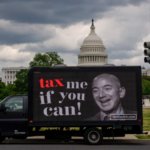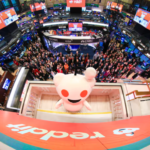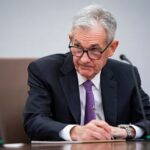When a consensus develops about the direction of a financial market, it’s usually a signal to think independently. Here’s one of the main reasons why the “crowd” is usually on the wrong side of major market turns.
RELATED ARTICLES
The big flaw in Biden’s billionaire tax proposal, according to experts
President Biden wants to raise taxes on Elon Musk, Jeff Bezos, and their cohort of Americans, who are amassing extraordinary wealth that is not taxable under current law. Biden says his plan would make the system more fair — but experts say it lacks practicality. The president wants to impose a minimum 25% tax on all Americans […]
President Biden wants to raise taxes on Elon Musk, Jeff Bezos, and their cohort of Americans, who are amassing extraordinary wealth that is not taxable under current law.
Biden says his plan would make the system more fair — but experts say it lacks practicality.
The president wants to impose a minimum 25% tax on all Americans with assets over $100 million. The “billionaire tax” would impact the 10,700 wealthiest Americans and generate an estimated revenue of $400 billion over 10 years.
The idea of levying higher taxes on those at the top of the economic ladder is not new. Yet the latest proposal raises more questions than answers.
“Are you taxing the rich? Are you taxing the wealthy?” Peter Ferrigno, director of tax service at Henley & Partners, a citizenship investment consulting firm, told Yahoo Finance. “They're very similar, but they are not the same thing.”
Furthermore, the proposed policy challenges a fundamental principle of the US tax code, which treats money earned as income differently from wealth generated through valuation growth.
How could the US government tax wealth?
Biden hasn’t offered many specifics, but to get to a minimum 25% rate, experts say he would have to tax unrealized gains — unsold profits from increases in asset values — as part of billionaires’ income. Under current law, unrealized gains aren’t taxed until the asset is sold at a profit.
The president says this is the proper way to calculate the true income — and true tax rate — of the ultra-wealthy. Billionaires make the bulk of their money through stock or investment growth instead of a wage from a 9-to-5 job. So, the president says, they shouldn’t be able to shelter income simply because they haven’t pocketed the profits.
“Billionaires don't often have a typical paycheck,” Brandon Zureick, managing director and portfolio manager at Johnson Investment Counsel, told Yahoo Finance.
Take one of the world’s wealthiest people, for example: Elon Musk's net worth surged nearly $12 billion over a span of five years beginning in 2018, from $8.4 billion to $20 billion. However, Musk reported only $1.52 billion in income during those years and paid $455 million in taxes.
That may sound like a lot, but Musk’s true tax rate amounted to only 3.79%. By contrast, the median American household earned $70,800 in 2021 and paid an average tax rate of 15%.
Under Biden’s proposal, Musk’s tax bill would have totaled $3 billion for 2018 through 2022 — nearly seven times higher than what he paid.
The 25 wealthiest Americans paid $13.6 billion in federal income taxes from 2014 to 2018. Meanwhile their wealth collectively increased by $401 billion in that same period, ProPublica reported. This means their collective average true tax rate was 3.4%.
To redesign this aspect of the tax code, Biden needs to consider: What happens when unrealized gains turn into losses?
In other words, how will the taxes work when investment values decline on paper?
“When you start taxing unrealized gains rather than realized gains, you're going down a very slippery slope,” Ferrigno said. “You want to tax the going up? Are you going to give money back when they go down again?”
For instance, if Musk’s share in Tesla (TSLA) surges from $100 billion to $200 billion, Biden’s proposed wealth tax would cost Musk $25 billion in that year — 25% of the unrealized $100 billion gain. But if Tesla shares declined by $100 billion the next year, would the government need to pay Musk back?
“That's where you open up a whole reason that other countries don't do this,” Ferrigno said. “Income tax has been around for centuries. And the reason no one's ever done this is because it's practically impractical.”
Top 1% pays nearly half of US tax
Opponents of a wealth tax reason that the share of federal taxes paid by the top 1% is already adequate. In 2021, the top 1% paid over $1 trillion, almost half of all tax revenue collected, according to the Tax Foundation.
“The income tax system in the United States is highly progressive and redistributive,” Erica York, senior economist at the right-leaning think tank Tax Foundation and author of its latest report on income tax data, told Yahoo Finance. The top 10%, she added, paid almost 76% of all tax revenue.
Critics also note that there is already a separate income tax on the rich, making Biden’s proposal redundant and unnecessary.
The alternative minimum tax (AMT) is a parallel system that sets a floor on what high-income individuals must pay. It removes some benefits and deductions on their tax returns, limiting the reductions to their tax liabilities.
“The US has had the alternative minimum tax for about 50 years,” Ferrigno said. “They already have a tool in the toolbox to try and address [taxes on high incomes].”
Ferrigno said an update to the AMT would be sufficient in taxing billionaires’ incomes.
Caution: Don’t be like Norway
History shows how exorbitant income disparities can lead to social crises: “Back to the French Revolution and guillotine if not careful,” Ferrigno said.
But he said the Biden administration should start with a lower tax rate on billionaires, like 10%, and progress from there before landing at 25%.
After all, levying an overwhelming wealth tax on the super rich, who are also super mobile, can backfire. A number of billionaires left Norway in 2022 after the country implemented a 1.1% capital asset tax on married households with equity over the equivalent of $3.7 million.
“Find out what works and import it and avoid what Norway did to drive half of [ultra-wealthy] away,” Ferrigno said. “Look at how Spain has a high enough threshold that people just grudgingly accept it.”
Spain has a long-standing regional wealth tax from 0.16% to 3.5%. But instead of emigration, wealthy Spaniards either accepted their wealth tax rate or relocated to a cheaper region within the country.
“[Spain’s wealth tax] has been there for a long time as well, so people are used to it,” Ferrigno said. “Plus the exemptions ensure that few people get into the highest brackets.”
Switzerland also assesses various wealth taxes at the regional level on individuals’ assets worldwide, including bank account balances, equities, boats, and airplanes.
Transformative technology, such as blockchain ledgers and artificial intelligence, is transforming financial systems, yet the US tax codes haven’t kept up.
“Our current system where we sit today may have been great in the past, but it’s not so great today,” said Jose Murillo, partner and National Tax Department leader at Ernst & Young.
An overwhelming share of American voters, or 70%, support the idea of raising taxes on billionaires, a recent Bloomberg poll shows.
“Imagine what we can do,” Biden said of taxing the wealthiest Americans, “from cutting the deficit to providing for childcare, to providing healthcare, to continue to provide our military with all they need.”
“This is not beyond our capacity,” Biden said.
Rebecca Chen is a reporter for Yahoo Finance and previously worked as an investment tax certified public accountant (CPA).
This Is How Much Nvidia Is Up Since the Corona Virus Market Crash
The Covid-19 Pandemic and subsequent global lockdowns impacted billions of people, and its repercussions are still being felt. Within the financial industry, the S&P 500 took a hit from 3,337.75 in February, 2020 to 2,304.92 by March 20: a thousand point crash in only 30 days. Since that time, the Dow Jones Industrial Average has […]
The Covid-19 Pandemic and subsequent global lockdowns impacted billions of people, and its repercussions are still being felt. Within the financial industry, the S&P 500 took a hit from 3,337.75 in February, 2020 to 2,304.92 by March 20: a thousand point crash in only 30 days.
Since that time, the Dow Jones Industrial Average has climbed to new heights, largely on the back of “The Magnificent Seven”, which are: Microsoft (NASDAQ: MSFT), Meta Platforms (Facebook) (NASDAQ: META), Amazon (NASDAQ: AMZN), Alphabet (NASDAQ: GOOG), Apple (NASDAQ: AAPL), Tesla (NASDAQ: TSLA), and Nvidia (NASDAQ: NVDA).
Nvidia has been one of the leaders of this post-pandemic surge, so let’s take a look as to why Nvidia stock, which has gained over 13X since that time roughly four years ago, was able to accomplish so much.
Nvidia's GPUs for 3D graphics have fueled the AI boom.
Nvidia’s beginnings were filled with struggles. Within its first three years of operation, founder and CEO Jensen Huang had to fire half of his employees trying to get the RIVA 128 graphic accelerator for 3D graphics completed and out to market. Having burned through $20 million in Venture Capital funding down to being a month away from bankruptcy, Nvidia finally succeeded, and the RIVA 128’s sales fueled Nvidia’s fortunes enough for it to go public in 1999.
Nvidia soon after released its first Graphics Processing Unit, the GeForce 256, which was crucial for accelerating 3D consumer hardware for video content, leading to landmark graphics hardware design contracts for Microsoft XBOX and Sony (NYSE: SONY) PlayStation 3's RSX graphics processor. By 2012, the company’s GPUs would be crucial to powering the AlexNet neural network, which set the stage for commercialized Artificial Intelligence (AI).
As Nvidia continued to grow, it expanded its product line, including their RTX series GPUs in 2018, which pioneered real-time ray tracing, This graphic rendering method mimics the actual physical behavior of light, which creates the hyper-realism key to the success of virtual reality in video graphics for video gaming and AI.
High profile deals with Toyota (NYSE: TM), Baidu (NASDAQ: BIDU), and Alphabet (still Google in 2018) would follow.
Nvidia's Cambridge-1 is the largest supercomputer in the UK and uses AI for healthcare research.
Unlike thousands of other companies that were negatively impacted by the local government mandated lockdowns during the Covid-19 outbreak, Nvidia was not one of them.
AI would prove to be the winning horse in Nvidia’s race to the top. Nvidia continued to improve its GPU offerings and created new partnerships for expanding the applications for AI. In October 2020, Nvidia announced the plans to design the Cambridge-1 supercomputer. In collaboration with AstraZeneca, GlaxoSmithKline, King’s College London, the Guy’s and St. Thomas NHS Foundation, and other organizations, the Nvidia Cambridge-1 is the UK’s largest supercomputer, and was specifically created for British healthcare research since its launch in 2021.
MSN
Reddit’s debut made a splash, but caution’s still the name of the game in the IPO market
Reddit Inc. enjoyed a strong debut as a public company in its closely watched offering Thursday, but don’t expect the IPO floodgates to re-open, according to Christian Munafo, Chief Investment Officer of Liberty Street Advisors. “The fact that this is well received is encouraging to us,” he told MarketWatch, but noted the caution that still exists […]
Reddit Inc. enjoyed a strong debut as a public company in its closely watched offering Thursday, but don’t expect the IPO floodgates to re-open, according to Christian Munafo, Chief Investment Officer of Liberty Street Advisors.
“The fact that this is well received is encouraging to us,” he told MarketWatch, but noted the caution that still exists in the broader IPO market. “I don’t think you’re going to turn a switch and the floodgates will open … we think there’s going to be a reserved approach.”
“We continue to believe that the market is going to start opening up, it’s just going to be measured,” he added. Munafo is portfolio manager of Liberty Street Advisors’ Private Shares Fund, which gives retail investors access to late-stage, venture-backed private companies. The fund is not an investor in Reddit.
Related: How Reddit’s big first trading day stacks up
Geopolitical uncertainty, interest-rate hikes and bank failures hindered a hoped-for IPO market rebound in 2023. A spate of underperforming IPO stocks in recent years has also contributed to the current air of caution in the IPO market, according to Munafo.
There is also an “underwriters’ dilemma” at the moment, according to Munafo. “Think about the investment bankers that underwrote a lot of the IPOs and SPACs that didn’t work out in 2020, 2021,” he told MarketWatch. “We think that the underwriters will take a cautious approach too in terms of how they are pricing these IPOs.”
“There’s a lot of investors that ultimately got burned in the last cycle,” Munafo added.
Related: Reddit revives a sleepy IPO market
However the Liberty Street Chief Investment Officer said there are a number of companies in the private market that are potential IPOs, and acknowledged the IPO chatter around videogame-focused chat startup Discord Inc., and security-operations company Arctic Wolf, which are part of the Private Shares Fund portfolio.
Elon Musk’s SpaceX is also in the portfolio and Munafo pointed to the IPO spinoff talk that has swirled around Starlink, the SpaceX-owned satellite internet constellation.
The Fed Is Getting ‘Itchy Fingers’ on a Rate Cut
‘Hoping isn’t planning’ Federal Reserve Chair Jerome Powell had a rather sunny outlook for the economy after the Federal Open Market Committee projected things are going to keep going: more growth, less inflation and low unemployment. But special contributor Larry Summers said that as much as we can hope for the best, we need a plan for what may be around the […]
‘Hoping isn’t planning’
Federal Reserve Chair Jerome Powell had a rather sunny outlook for the economy after the Federal Open Market Committee projected things are going to keep going: more growth, less inflation and low unemployment. But special contributor Larry Summers said that as much as we can hope for the best, we need a plan for what may be around the corner.
Rather than simply say that current rates are restrictive, the Fed “needs to take a view” on where the long-term neutral rate is, Summers said. “If you don’t know what’s neutral, you don't know how expansionary or restrictive you're being.” And he finds “bizarre” the Fed’s suggestion “that the ultimate neutral rate is 2.6%.” Among other things, Summers cited expansionary fiscal policy, new climate investment, more defense spending and money flowing into chips for the AI revolution. “The neutral rate is far more likely to have a 4-handle on it right now than it is to have a 2-handle,” he said. If Summers is right, those rates aren’t nearly as restrictive as Powell thinks they are.




